

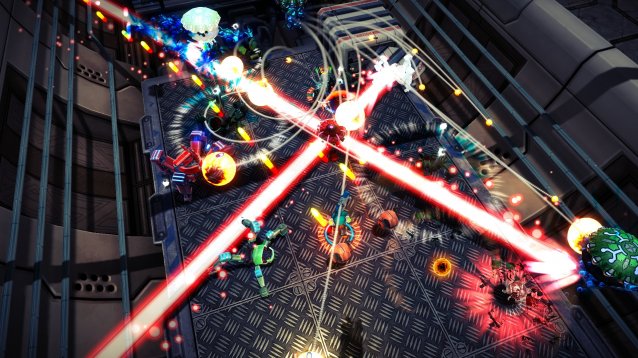
One of the great things about games built around nostalgia for the arcades of old is the fact that the modern versions are almost always better than the reality of their cabinet ancestors. Control schemes get updated with modern touches, visuals are in hi-def, and of course there isn’t the constant thirst for quarters.
Assault Android Cactus checks all the right boxes for an arcade game: It’s a twin-stick shooter with bright, flashy visuals, score-attack gameplay, and a four-player co-op mode. It manages to mostly avoid the annoying aspects of the genre, and adds a sizeable helping of personality up with the throwback action as well.
The puzzling title is cleared up right as the game opens: You start out as Cactus, an “assault android” with the interplanetary police on a customs mission of some kind to a large space freighter, but things quickly turn bad as she approaches the ship – its weapons systems zero in on her fighter and she makes a snap decision to improvise and crash through the hull in order to get on board and avoid being laser beamed into space dust. Once aboard, she meets a few of the ship’s resident assault androids: Holly, Lemon, and Coral. It seems the ship’s AI core has gone haywire and is sending out legions of evil robots to take over the ship. It’s up to our heroines to blast their way through the robot army and make their way to the core.
Each stage has you take on huge waves of robots, dispatching them with your chosen assault android’s unique set of weapons. Cactus has a straightforward machine gun, with a high-damage flamethrower as a secondary. Holly’s main attack uses homing bullets, and she fires a slow but devastating cannonball with her backup. My favorite character, Peanut, sprays molten magma that leaves damaging creep on the floor, and as a secondary she can rush forward with a drill arm in a move that doubles as an effective evade. There are a total of nine assault androids to unlock and each one feels genuinely distinct and demands her own playstyle.
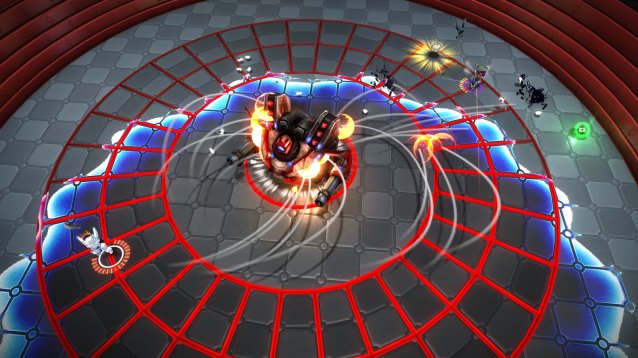
Once you’ve picked your android, you set about destroying robots in the campaign or a never-ending “infinity drive” mode. Fluidity of motion is key, and Assault Android Cactus feels balletic in its approach to twin-stick bullet hell. You’re constantly moving to dodge bullets and get a line on an enemy, often as the stage transforms underneath your feet. You’re further pressured into moving by the game’s health mechanic – you can “overheat” and fall down if you take too many hits, but what really determines whether you’ll be able to continue fighting is your battery, which is constantly draining. You have to pick up batteries dropped by enemies as your own gets close to zero, because once it’s out, game over.
There’s a certain smoothness to the control feel that sets Cactus apart from twitchier bullet hell shooters like Nuclear Throne, for instance. It doesn’t feel as surgically precise, and the game tends to be pretty forgiving when it comes to aiming – you’re going to be holding down “fire” almost constantly with most of the characters, although certain androids like Shiitake (who uses a slow-reload railgun) require a lot more finesse. I found this to be much more of a problem when using a controller – when I switched to keyboard and mouse, I started getting S ranks a lot more regularly. Unfortunately, there’s no option to adjust controller sensitivity to make it as easy to whip your aim around the screen.
The campaign is short and a bit unevenly paced, while we’re on the subject of demerits. Boss fights are gigantic spikes in difficulty, and the final stages are harder by far than anything that’s preceded them. Difficulty is also artificially increased by the way the battery drop mechanic works – often times you’ll have only seconds to get to a dropped battery, and in some cases the game’s decision as to where to drop one feels incredibly unfair. While there’s a terrific co-op mode that supports four players, it’s local only, which is very disappointing. And when things get really hectic on screen, it can get very difficult to tell where you are.
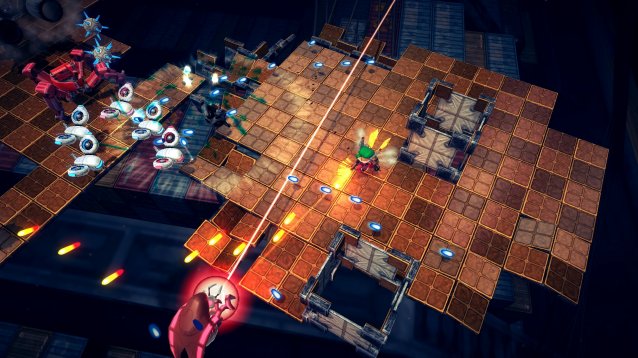
Ultimately, though, these are fairly minor dings on an otherwise solid and endearing game. While the campaign doesn’t have a whole host of levels, there’s plenty of reason to replay each of them many times – the game grades your score with each android and tracks it against friends and global leaderboards. There’s also the infinite drive mode and a daily score attack mode to test your skills in. You can also unlock visual filters, a “rubber soundtrack” that speeds up and slows down with the flow of the game, a “small head” mode, and ultra versions of each android’s secondary weapons. There’s plenty to do here in a budget-priced game.
Assault Android Cactus, despite the bold colors and glowing lasers, a very unpretentious game that’s mostly about having fun. There’s the bobbleheaded, space marines-via-Funco Pop design of each character, the bumping soundtrack, and the androids’ distinct voices and senses of humor. Its charm and sense of fluidity and flow make it perfect for short, intense sessions – say 15 to 30 minutes during a quick break. There’s always another high score to beat or another infinity mode layer to descend to, and it’s a fun ride every time, and the cast of characters means you’ll always be in good company for the trip.
Assault Android Cactus was developed and published by Witchbeam and released Sept. 23 for PlayStation 4, Vita, PC, Mac, and Linux and retails for $14.99. A review copy of the game was provided by the publisher.

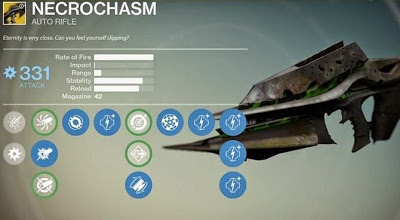
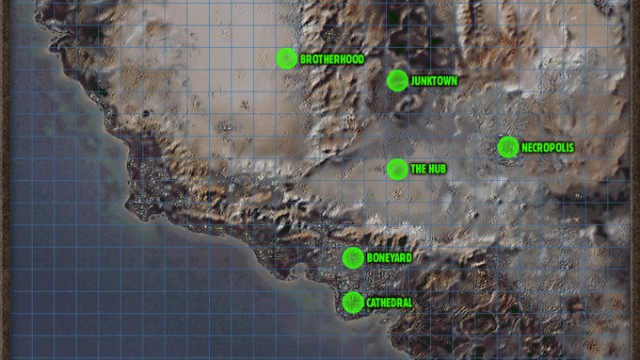

 How to open Destiny Second Sub-Class, Sell items, Best Guardians and more, Tips and tricks guide for PlayStation and Xbox
How to open Destiny Second Sub-Class, Sell items, Best Guardians and more, Tips and tricks guide for PlayStation and Xbox MGS V: The Phantom Pain How to Unlock the Key Items Guide
MGS V: The Phantom Pain How to Unlock the Key Items Guide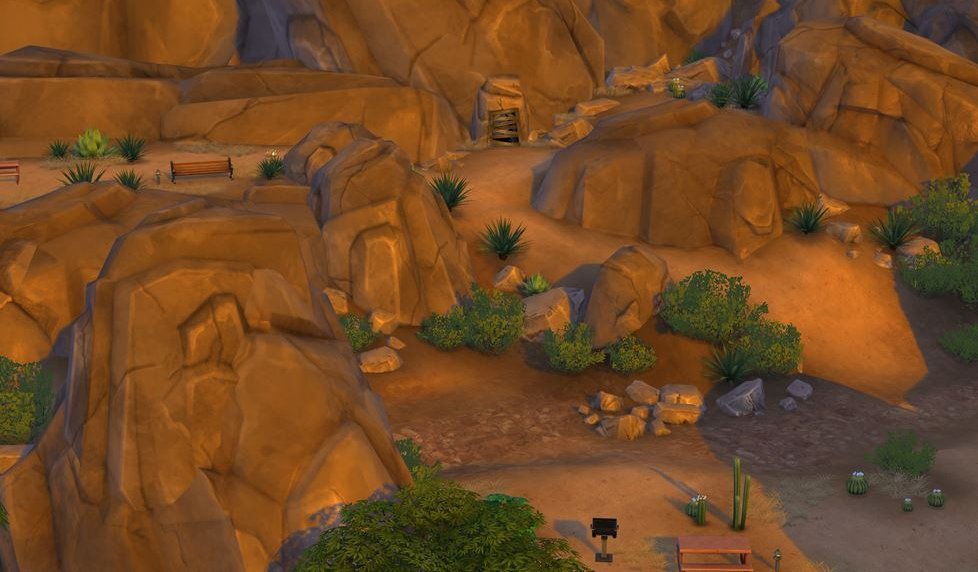 The Sims 4: How to Unlock the Forgotten Grotto in Oasis Springs
The Sims 4: How to Unlock the Forgotten Grotto in Oasis Springs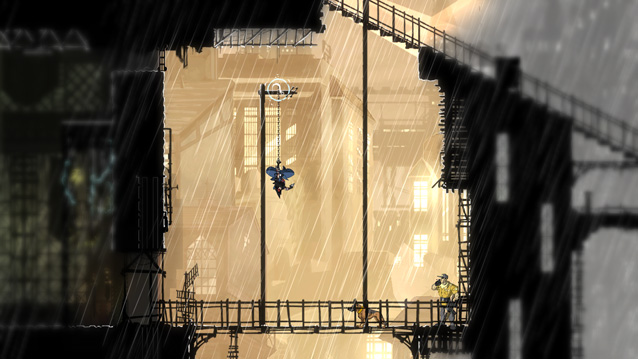 PAX East: Mark of the Ninja Impressions
PAX East: Mark of the Ninja Impressions Assassin’s Creed: Revelations Walkthrough
Assassin’s Creed: Revelations Walkthrough